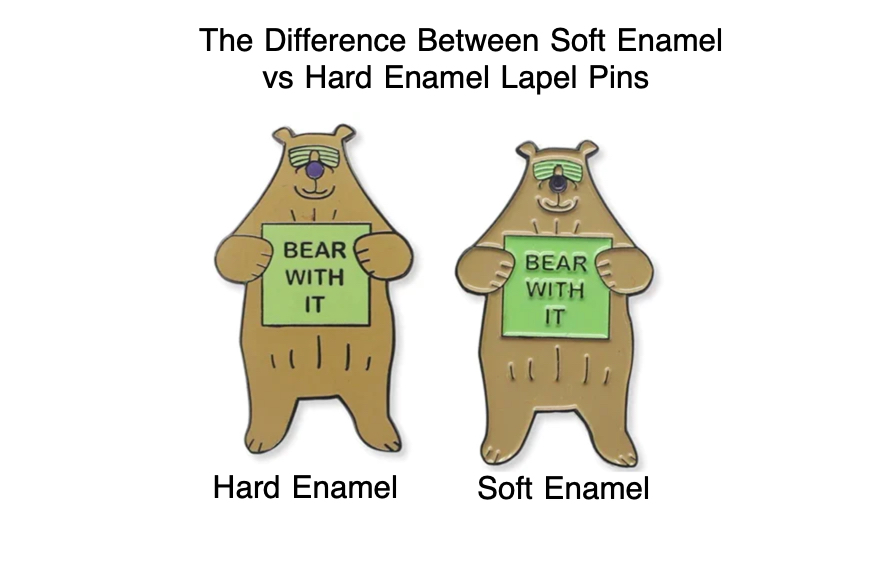The Difference Between Soft Enamel and Hard Enamel Lapel Pins – What You Need to Know

Lapel pins have become popular accessories for people to proudly display their interests, affiliations, and identities. They come in a variety of shapes and sizes and can be crafted from a variety of materials. Two of the most popular types of lapel pins are soft enamel and hard enamel pins.
This article will explain the differences between soft enamel and hard enamel lapel pins, how they are made, the advantages and disadvantages of each, and cost factors.
What Is a Lapel Pin?
A lapel pin is a small pin that is typically worn on the lapel of a jacket or coat. It is often used to show membership in a club, organization, or team, or to express a political or philosophical opinion. Lapel pins can also be used to recognize achievement, commemorate an event, or advertise a product.
Soft Enamel Lapel Pins
Soft enamel lapel pins are the most popular type of lapel pin. They are made by stamping metal into a die and then having the die filled with enamel paint. The paint is then cured and the excess paint is removed.
Soft enamel lapel pins are recognizable for their slight texture. The raised metal lines create a border between the different colors of enamel and create a 3D effect.
How are Soft Enamel Lapel Pins Made?
Soft enamel lapel pins are made in a three–step process. First, the design of the pin is stamped into a die. Then, the die is filled with enamel paint. Finally, the paint is cured and the excess paint is removed.
Advantages of Soft Enamel Lapel Pins
Soft enamel lapel pins have many advantages. They are affordable and easy to produce, making them a great choice for anyone looking for a lapel pin on a budget. They also have a unique texture, which makes them stand out from other types of pins.
Disadvantages of Soft Enamel Lapel Pins
Soft enamel lapel pins also have a few disadvantages. Since the enamel paint is not completely sealed, they can easily get scratched and the paint can fade over time.
Hard Enamel Lapel Pins
Hard enamel lapel pins are made in a similar way to soft enamel lapel pins. However, the process is more involved and the result is a higher quality, longer lasting lapel pin.

Hard Enamel Lapel Pins
How are Hard Enamel Lapel Pins Made?
Hard enamel lapel pins are made in a four-step process. First, the design of the pin is stamped into a die. Then, the die is filled with enamel paint. The paint is then cured and the excess paint is removed. Finally, the pin is polished to give it a glossy finish.
Advantages of Hard Enamel Lapel Pins
Hard enamel lapel pins are more durable than soft enamel pins, making them a great choice for pins that will be worn and handled frequently. They also have a glossy finish, which makes them look more professional.
Disadvantages of Hard Enamel Lapel Pins
The main disadvantage of hard enamel lapel pins is that they are more expensive than soft enamel pins. They also require more time and effort to produce, which can add to the cost.
Cost Factors
The cost of lapel pins varies depending on the type of pin, the size and complexity of the design, and the quantity being ordered. Soft enamel pins are typically less expensive than hard enamel pins, but the cost difference can depend on the specific design and the number of pins being ordered.
Conclusion
Soft enamel and hard enamel lapel pins are both popular choices for people looking to show their interests, affiliations, and identities. Soft enamel pins are more affordable and easier to produce, but they are not as durable as hard enamel pins. Hard enamel pins are more expensive, but they are more durable and have a glossy finish. The cost of lapel pins can vary depending on the type of pin, the size and complexity of the design, and the quantity being ordered.











Leave a Comment